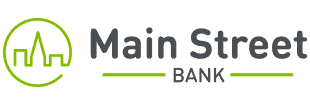 Designing your budget takes some thought, but it pays off over time. You have the ability to create a personalized digital budget, take advantage of advanced budgeting technology, or go old school with a pen and paper. As long as you include a few essentials, your budget is whatever you want it to be. Read on for an exploration of tools and tricks to turn your budget into an effective money-saving machine.
Designing your budget takes some thought, but it pays off over time. You have the ability to create a personalized digital budget, take advantage of advanced budgeting technology, or go old school with a pen and paper. As long as you include a few essentials, your budget is whatever you want it to be. Read on for an exploration of tools and tricks to turn your budget into an effective money-saving machine.
♦ ♦ ♦
Budgeting Tools
 Budgeting is faster and easier with tools and templates. You can store your budget online, in a notebook, or on an app on your phone. Different people prefer different methods and levels of accessibility for their budgets. Depending on your preferences, you can use premade budgeting tools or go solo and design your own budgeting spreadsheet. We suggest that if you are starting a budget for the first time that you choose a premade app or spreadsheet, and only advance further once you feel comfortable and are looking for more features or personalization.
Budgeting is faster and easier with tools and templates. You can store your budget online, in a notebook, or on an app on your phone. Different people prefer different methods and levels of accessibility for their budgets. Depending on your preferences, you can use premade budgeting tools or go solo and design your own budgeting spreadsheet. We suggest that if you are starting a budget for the first time that you choose a premade app or spreadsheet, and only advance further once you feel comfortable and are looking for more features or personalization.
Budgeting Spreadsheets
![]() Spreadsheet programs such as Microsoft Excel or Google Sheets are popular tools to build a budget with. Data sheets offer incredible flexibility for your budget, but they can take time to build up to your ideal vision. If you decide to go for the spreadsheet approach, then you can use advanced spreadsheet functions to automate calculations and suggest inputs.
Spreadsheet programs such as Microsoft Excel or Google Sheets are popular tools to build a budget with. Data sheets offer incredible flexibility for your budget, but they can take time to build up to your ideal vision. If you decide to go for the spreadsheet approach, then you can use advanced spreadsheet functions to automate calculations and suggest inputs.
While spreadsheet budgets can be complicated to set up yourself, the payoff is tremendous. If you aren’t interested in custom-building your own budget, many premade spreadsheets are available online. They can offer you a starting point to build from, or inspiration for your own creation.
Get started with these budgeting tips
Budgeting Apps
![]() Budgeting apps are a convenient way to easily access and calculate your information. Budgeting apps have useful tools for cataloguing information. However, they are not as customizable as spreadsheets or notebook use, and they can be frustrating at times. There are many options for budgeting applications with a large variety of features. Applications might require a paid subscription or have free versions with advertisements. And a portion of budgeting apps are accessible online, while others are regulated to mobile devices. Budgeting apps can even pair with your bank accounts and credit cards to keep track of everything all at once. A budgeting app is a straightforward way to see all your accounts and expenses at once. If you would prefer to avoid inputting data into your budget on a regular basis, then a budgeting app might be the right choice for you.
Budgeting apps are a convenient way to easily access and calculate your information. Budgeting apps have useful tools for cataloguing information. However, they are not as customizable as spreadsheets or notebook use, and they can be frustrating at times. There are many options for budgeting applications with a large variety of features. Applications might require a paid subscription or have free versions with advertisements. And a portion of budgeting apps are accessible online, while others are regulated to mobile devices. Budgeting apps can even pair with your bank accounts and credit cards to keep track of everything all at once. A budgeting app is a straightforward way to see all your accounts and expenses at once. If you would prefer to avoid inputting data into your budget on a regular basis, then a budgeting app might be the right choice for you.
Physical Tracking
Notebooks or binders are an “old school” approach to budgeting. These are great if you like to hold something tangible, but still want to access it at any point. Due to the nature of physical goods, using a calculator in tandem with your notebook will help you fully benefit from your budget. If you want something physically present to encourage you to keep track of purchases, a notebook is a preferable approach. There is great satisfaction in physically writing down your budget, and it can be a very relaxing and meditative practice. Recording in a notebook is also a convenient way to rest your eyes if you work with screens all day. Various budget templates are available on the internet for you to print, and you can set up your own ring-binder or notebook as you like.
Keep in mind that physical budgets have their downsides. Books are at a higher risk of loss, damage, or theft than digital versions, so keeping your budget at home or with your other documents is a good practice. Security can also be an issue with a physical budget. Additionally, you miss the ability to create instant copies, erase content, or easily utilize premade templates and formulas. Tracking your budget physically is a hugely different method than the digital-age tools that we now have access to. However, you are primarily budgeting for yourself. If you prefer a physical copy for your budgeting, it is still a viable approach.
♦ ♦ ♦
Entries & Expenses
Keeping up with entries

Set Up
The most basic set up of your budget should include a section for your income as well as a section for your expenses. To “balance” your budget is to equalize your income with your expenses. A balanced budget is the key to less financial anxiety, improved savings, and more control over your finances.
When you start your budget, you should overestimate your expenses slightly. This gives you wiggle room as you gain a comfortable understanding of how much you usually spend. Once you have a good understanding of how much you spend in each area of your usual expenses, you can tighten your budget up and begin to put that extra money towards your larger goals.
Static Vs Dynamic Expenses
As you budget and get to know your spending habits, you will start to learn that some expenses change frequently, while others stay consistent from week to week, month to month, or year to year. There are two main kinds of expenses: static and dynamic.
Static Expenses

Creating a section in your budget for static expenses helps keep them together and provides you with a clear dollar amount to set aside each month. Setting money aside for static expenses ensures that you can pay for them both on time and in full. Try making a list of your static expenses and adding the total monthly sum. At the beginning of each month, you can set aside that money and know that it is already pre-destined for your expenses.
Managing Yearly Expenses
You can often save money by paying for subscriptions or bills a year at a time instead of monthly. While it can be difficult to prepare for these large and infrequent payments, this is simple with a budget.
Once you can afford the up-front yearly cost, you then divide that total expense by twelve and set a chunk of money aside monthly. By saving a portion of that upcoming payment each month, you are entirely prepared to pay for that upcoming yearly payment. And dividing that payment into monthly portions turns a difficult yearly payment into an easily budgeted static expense.
Dynamic Expenses
The other kind of expenses are dynamic expenses, and they can be a bit trickier to budget for. How much goes into your groceries every month or how much you usually spend on gas are both dynamic expenses, meaning that the exact amount that you spend varies each month. Dynamic expenses are more difficult to budget for because you don’t know how much they require at first glance. The best way to budget for dynamic expenses is to track your spending in that category and learn what your pattern is. Once you have established your pattern of spending you can allocate a range of money to pay for what is needed. For example, if you usually spend $150-200 dollars each week on groceries, you can have $200 ready and earmarked for that expense.
An Emergency Fund is a Must
It is better to be on the upper side of your estimation, so that you aren’t short on cash when you need it.
A solid emergency fund is an important buffer for your budget.
The Importance of an Emergency Fund
♦ ♦ ♦
Closing

Explore Related Articles
How to Realistically Reduce Your Expenses
Follow us on Social for More Financial Content

